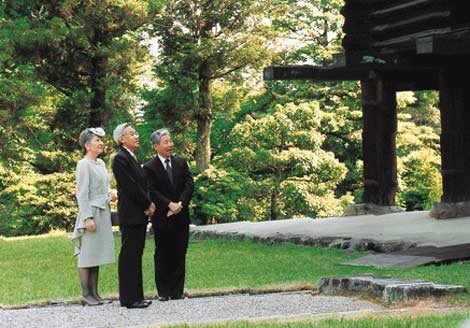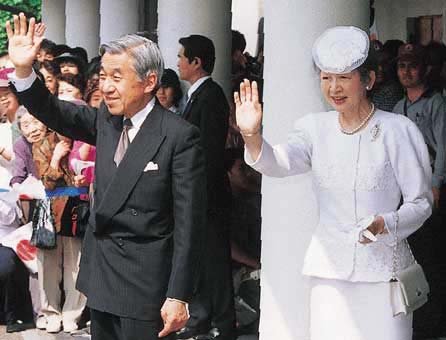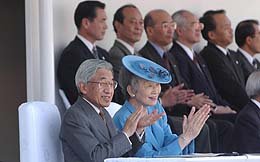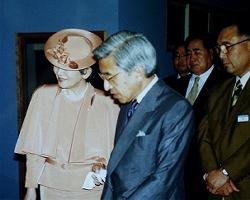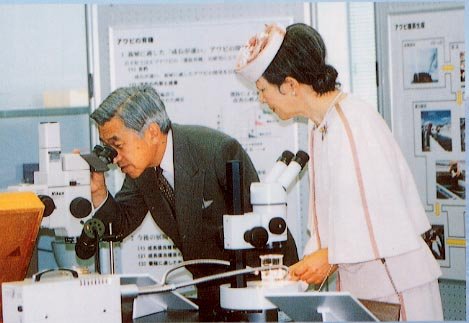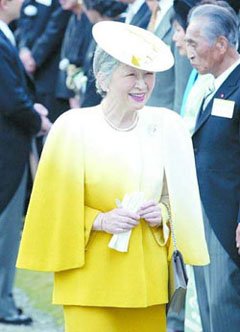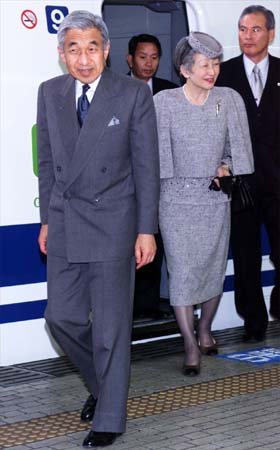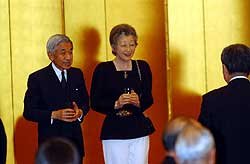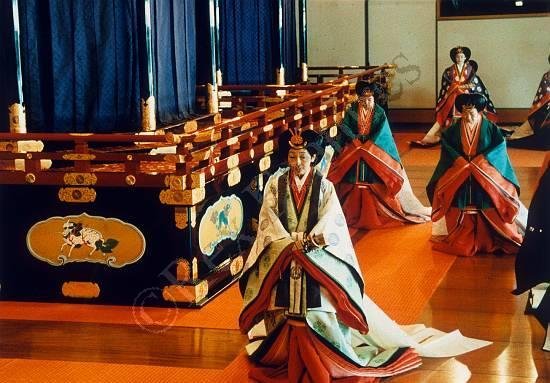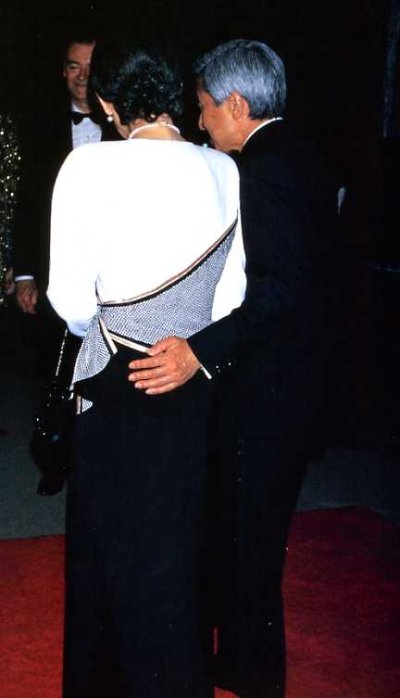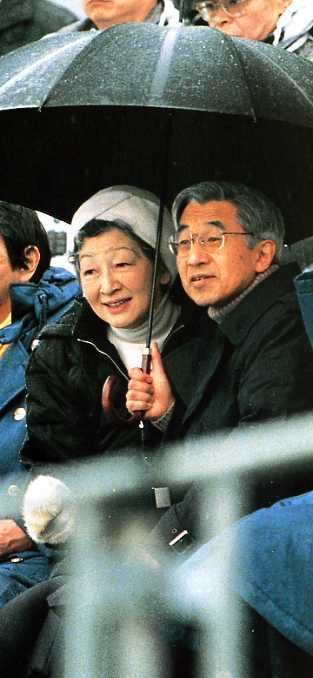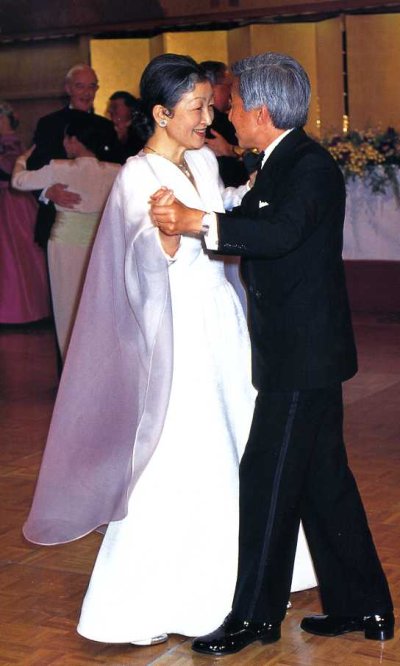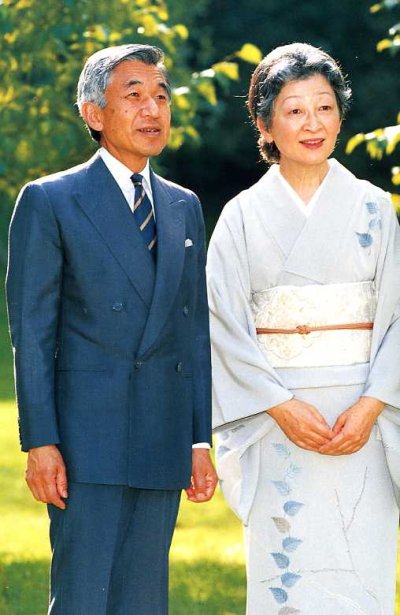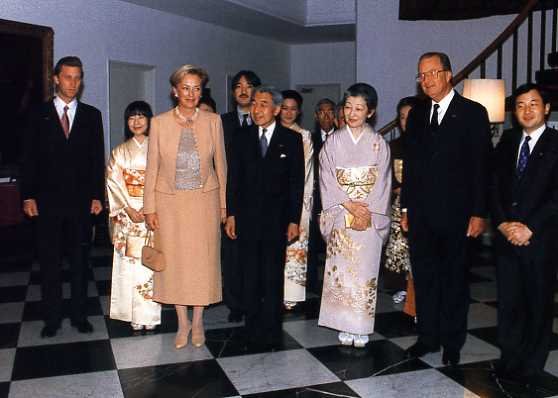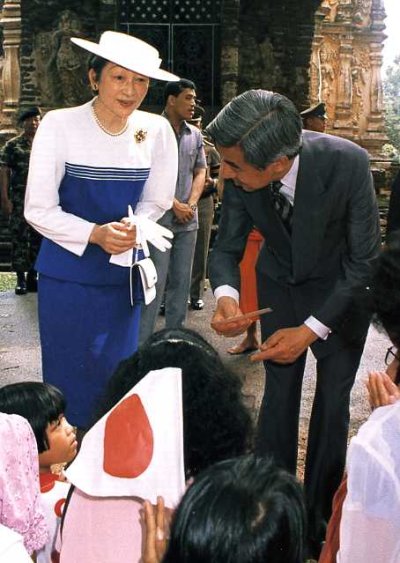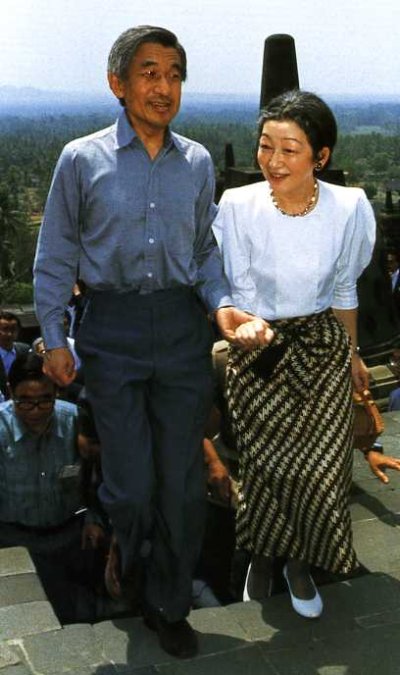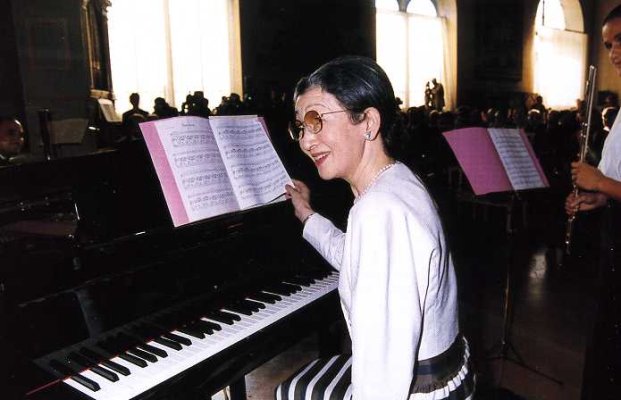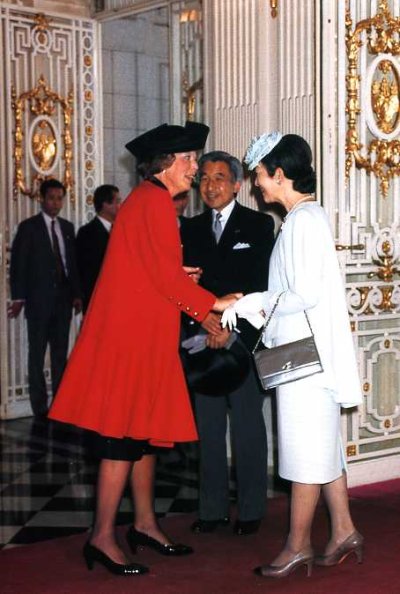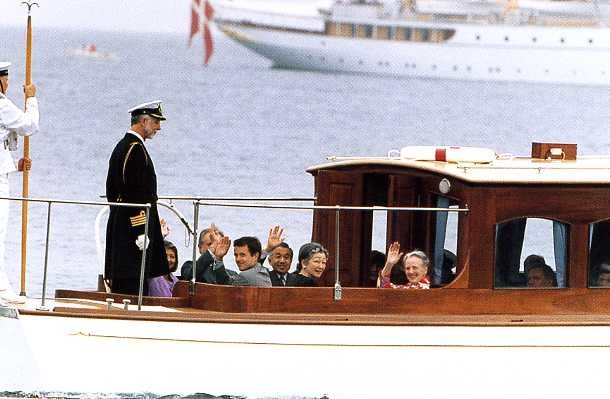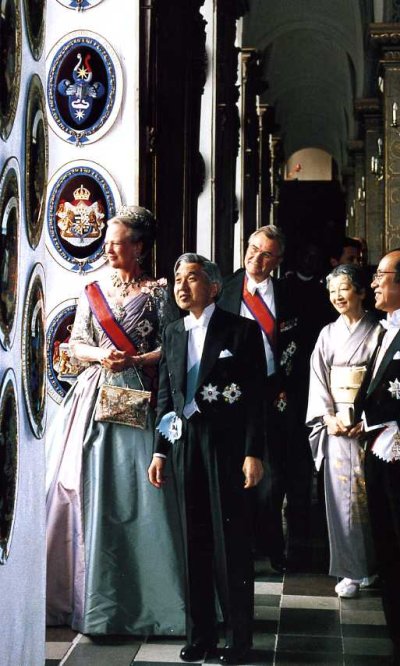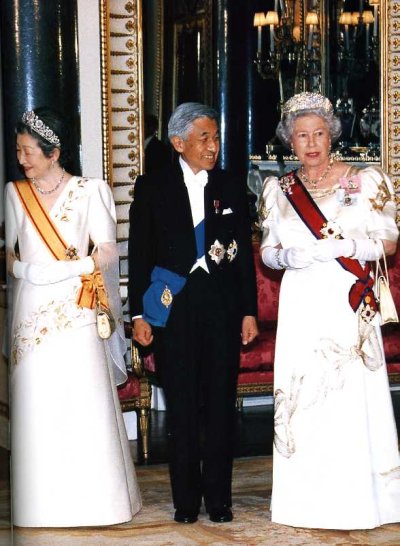Address by Her Majesty the Empress of Japan
At the Opening Ceremony of the Jubilee Congress to Commemorate
the 50th Anniversary of the
International Board on Books for Young People (IBBY)
Sunday, 29 September, 2002
Basel, Swiss Confederation
Mrs. Mubarak,
Mrs. Dreifuss,
Dr. Conti,
Mrs. Shima, Mrs. Maissen.
Dear friends
It was a most unexpected pleasure for me to be asked to join Mrs. Mubarak and Mrs. Dreifuss as a Patron of the IBBY Basel Congress celebrating the 50th anniversary of IBBY’s foundation. I am happy to be here at the opening ceremony to meet with you all, who have been devoting yourselves so sincerely to the common cause of books and children in so many parts of the world.
Congratulations on the Golden Jubilee of the IBBY!
Fifty-seven years ago, when World War II came to an end, Jella Lepman developed an irresistible desire to provide books for children living in Germany’s impoverished post-war society. She sent a plea to the world, that books then being read by children in the free world be sent to the German children, to feed their mind and uplift their spirit. In response to her plea, about eight-hundred books from twenty counties reached her.
According to the newly issued edition of A Bridge of Children’s Books by Jella Lepman, these books toured many cities in Germany, passing through the hands of more than a million children and adults, and sometimes seen clutched in tight embrace by the children. Many of these books came back with pages worn and torn ― the state of well loved books which Lepman truly admired.
Grown-ups who have found the joy of reading in childhood and experienced the power of the printed words wish that the same opportunities be given to every child, especially to those who have to survive difficult circumstances, as they are the ones who need mental and spiritual sustenance that books can offer most. It must be the wish of such grown-ups that prompted the hearty response to Lepman’s plea some fifty years ago, and it must also be this wish which has kept IBBY people to carry on its work for the past 50 years.
My first involvement with IBBY came around towards the end of the 1980’s, when the Japanese Board on Books for Young People (JBBY) asked me if they could entrust to me the translation of Mado Michio’s poems into English, as the poet was selected to be the candidate for the Hans Christian Andersen Award in the year 1990. Several collections of Mado’s poems were delivered to me, together with a letter explaining that rather than winning the Award, the aim was to let it be known among IBBY people that we had such a poet in Japan. The post-script of the letter said that “unfortunately” there would be no payment for my work!
It was not that I was much experienced in translating poetry into English. Up to then, I had translated only three or four poems a year, for reading before the Poetry Reading Circle in Tokyo to which I had been invited for over ten years. The ones that I had translated were mostly poems I came across while I was rearing my three children.
In those days when my children were growing up, I was filled with great joy, but quite often I would also feel some indefinable anxieties. The innocent life in my arms seemed to be a precious treasure given to me in trust by someone. I think I was then feeling both the sense of awe towards the life of the child and the fear to take the daunting responsibility to hold that precious life in my care. Those were the days when I could not help but pray that the world into which our children grow to live may be peaceful, for every turbulent incident in the world seemed so close to me then. It was during such period that I translated into English some of the poems that appealed to me and shared them with the members of the Poetry Reading Circle.
Little by little, I set myself to translating Mado’s poems. With my limited abilities, the progress was slow, and it was only in the fourth year that I had finally completed the translation of 80 of his poems. Through this work, I came to know JBBY, and later some of the IBBY people from other countries.
Gradually I learned that the members of IBBY cover many fields. They include authors, illustrators, translators, editors, publishers, researchers, educators, teachers and librarians. One person I met in Helsinki, who had worked for long years with IBBY, was a puppeteer who ran a charming little puppet theater. I came to understand that what unites IBBY people is the common aspiration that children may encounter good books, and that the books may bring children in different parts of the world closer to each other. Thus IBBY began to reveal itself to me as a global network of people involved in the work that has something to do with children and books, working in earnest with worldwide perspective.
My link with IBBY went a step further, when I was asked to deliver a keynote speech at the 26th Congress in New Delhi. The theme of the Congress was “Peace through Children’s Books”, and I spoke about my memories of childhood reading, especially of the time towards the end of World War II when I was evacuated from the city.
At that time, there were no more than four or five books within my reach. Among the few I was fortunate enough to own, there was a book on Japanese myths and legends. It gave me, though in a very vague way, a certain feeling that I was living with the past at the forefront of our people’s history. I think I gained, through this reading, a sense of belonging,and it helped me later to develop an enjoyable way towards understanding other countries and peoples first through their myths, legends and folktales.
There were also two volumes of “Masterpieces of World Literature for Boys and Girls” which I relished. They contained stories, excerpts from novels― not abridgements, ― poems and letters of outstanding writers from many lands including even some from our enemy countries at that time.
These two volumes taught me there were many sorrows in the world that I had not known, and I learned how intensely people other than myself could feel, and how deeply they could be hurt. I also came to realize that in order to live, one has to bear life’s complexities. Together with this, reading brought me a real spiritual uplift. It planted seedlings within me that would grow reaching out towards joy. Indeed, while living in the countryside during the war time, I was meeting both my remote ancestors and strangers from other lands on the bridge of children’s books. How fortunate I was to have someone who slipped a book or two into my hands when he visited me at our place of wartime evacuation.
When I was invited to attend this Congress, I hesitated at first thinking that I lacked professional qualifications. I asked myself what I could do for the Congress, and one answer I could come up with was based on the fact that I am one of the many who were greatly benefited by the books read as a child. I thought that I could at least share with you my deep gratitude for books, and I also could convey my appreciation to you for what all of you are doing to bring books and children together. And that set me on the journey to Basel. Perhaps it was the little girl who still lives in me who urged me to come here to attend the Congress.
I trust that IBBY will continue to perform its activities for many years to come, as there will always be people who believe both in the values of books and the potentialities of children. The theme of the Congress “Children and Books - a Worldwide Challenge” seems to me to be an expression of the strong sense of mission felt by the people who support IBBY.
All of us are aware of the fact that there are children in the world today who are not only deprived of books, but even opportunities to learn how to read and write due to economic or social reasons. There are also children who are forced to spend their days in fear and dread in the areas of strife. My heart grieves to think that there are too many such children.
I find it encouraging though, that many of the IBBY members have already given thought to the fact and have been putting their thoughts into action. It will not do for us only to shed tears over the plight of these children, and just pity them as poor unfortunates. Rather, I would place my hope in such children, for they might lead our world of tomorrow with the new wisdom that only those who have experienced utmost sorrow and pain and yet survived them could possess. Please trust the great potentialities of those children who are struggling with adversity, and please never lose them out of your sight.
There is one poem I read while I was bringing up my children that I can never forget. The poet spoke to me from afar telling that a mother, though she may be uneasy and weak-hearted, should never let her shadow fall upon the newly born, for the future of the child holds enormous potentialities.
The poem begins like this:
On the cheeks
Of your innocent newly born,
Mothers,
Do not drop
Tears
Of your own despair.
Though now these cheeks
Are red and small,
Hardly more than damson-plums,
Who knows that someday
They would not flush and glow
In a battle
For humanity.
Mrs. Maissen,
I can well imagine how much thoughts and care you have put into the planning and preparation of the Congress and how wholeheartedly you have been working till today. We all appreciate your dedication to IBBY, and I thank you very much for inviting me to be a part of this significant gathering.
I hope that for all of you the Basel Congress will be an enjoyable and fulfilling occasion. An international conference is a wonderful opportunity for people with common interests and aspirations to get together regardless of nationalities to share experiences and ideas. I hope each and every one of you will find yourself enriched and strengthened and your hope renewed for your mission, when you leave here.
I am afraid that I myself am not in a position to be able to fully participate in the various activities of IBBY. But I feel that after experiencing this Jubilee Congress, I shall be able to better follow your work and continue giving moral support, with a deeper understanding towards your commitment to bring books and children together in so many different areas of the world.
I wish you all the best, and thank you.
